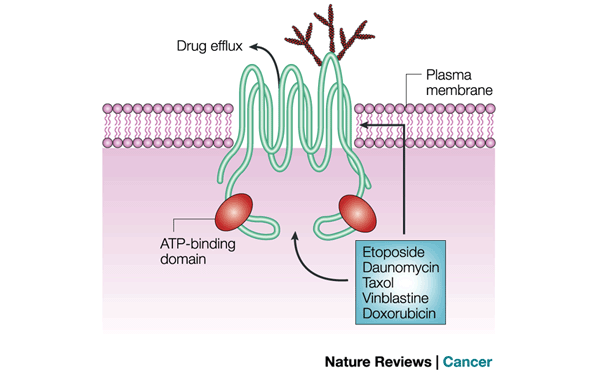Image:PGP.gif
From Proteopedia
Summary
The multidrug resistance gene MDR1, which encodes the cell-surface molecule P-glycoprotein (PGP), can confer resistance to a wide variety of drugs. PGP transports drugs out of the cell, which is a process that requires the presence of two ATP-binding domains. These domains are a defining characteristic of this family of ATP-binding cassette (ABC) transporters. The exact mechanism of drug efflux is not well understood, but might involve either direct transport out of the cytoplasm or redistribution of the drug as it transverses the plasma membrane. Some cytotoxic drugs that are known substrates for PGP include etoposide, daunomycin, taxol, vinblastine and doxorubicin. PGP is modified by sugar moieties (black) on the external surface of the protein.
FROM: Gene therapy to protect haematopoietic cells from cytotoxic cancer drugs by Brian P. Sorrentino. Nature Reviews Cancer 2, 431-441 (June 2002)
Licensing
{{subst:No license from license selector|Somewebsite}}
File history
Click on a date/time to view the file as it appeared at that time.
| Date/Time | User | Dimensions | File size | Comment | |
|---|---|---|---|---|---|
| (current) | 03:01, 1 December 2012 | Eyitayo Akoda (Talk | contribs) | 600×373 | 36 KB | The multidrug resistance gene MDR1, which encodes the cell-surface molecule P-glycoprotein (PGP), can confer resistance to a wide variety of drugs. PGP transports drugs out of the cell, which is a process that requires the presence of two ATP-binding doma |
- Edit this file using an external application
See the setup instructions for more information.
Links
The following pages link to this file:

